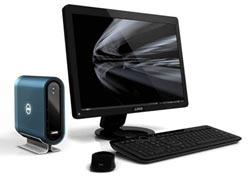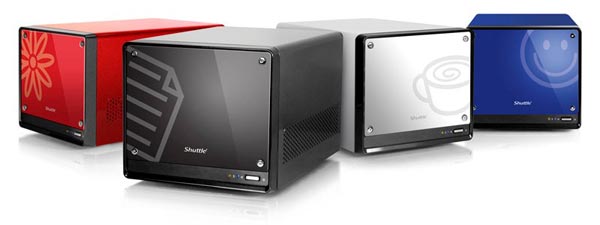Beyond Atom: Exploring Performance ITX Solutions
Introduction
 Thanks largely to all of the attention surrounding the Intel Atom platform and its alternatives like the Via Nano and NVIDIA Ion, small form factor (SFF) systems have been generating tech news in a big way for the past half year. While tiny toaster-sized machines have been relevant for some time, as proven by the continued success of Shuttle Computers, it has been a relative niche that doesn't get nearly as much hype as gigantic, fire-breathing gaming rigs.
Thanks largely to all of the attention surrounding the Intel Atom platform and its alternatives like the Via Nano and NVIDIA Ion, small form factor (SFF) systems have been generating tech news in a big way for the past half year. While tiny toaster-sized machines have been relevant for some time, as proven by the continued success of Shuttle Computers, it has been a relative niche that doesn't get nearly as much hype as gigantic, fire-breathing gaming rigs. Historically, there have been very good reasons why tiny little ITX machines weren't more mainstream. Pre-Atom, they have been a rather poor value for the general consumer. Despite being significantly smaller than a typical mid-tower, therefore requiring less materials and taking up less shelf space, ITX cases have had an uncanny tendency to cost more. ITX chassis were also often designed to use compact premium parts meant for notebooks, like 2.5" hard drives and low-profile optical drives, which further exasperated the value proposition. Not to mention most ITX cases also sport a flat low-profile design that generally didn't have space for full-height expansion cards which means you were restricted to low-profile cards; gaming was simply out of the question as low-profile video cards are rare--competent ones even more so.
Even if you got over the initial high cost and severe configuration restrictions, long-term value was poor due to a general lack of upgradeability. In the end, a potential small form factor customer was often looking at spending a solid chunk of change for an ITX machine, often enough for two similarly spec'ed standard sized towers. In many ways, the traditional ITX platform of old was like a notebook without the integrated screen or portability. Sure it's smaller than a typical desktop, but you get less performance for your dollar and you can forget about upgradeability or gaming.
All of these factors combined to keep ITX out of the mainstream. It wasn't until netbooks and the Atom came along and did away with the value problem that ITX finally made it back into the news. Now you can hardly go a week without hearing about a new Atom competitor or stumbling over a press release about another affordable SFF box. Not that we're complaining mind you. If you've been keeping up with our recent reviews, you'd know that we rather like the little machines. We love the flexibility, affordability and energy efficiency of a small form factor machine, but hate that we must part with our quad-cores and high performance video cards.
 Although the new breed of Atom powered SFF systems, such as the Acer Aspire Revo, ASUS Eee Box, and Dell Studio Hybrid, are plenty affordable, they still aren't upgradeable or especially gaming friendly. In fact, all the buzz around Atom might have cemented the perception that SFF in general, and the tiny ITX form factor especially, are good for nothing more than low-power, energy efficient computing. However, in the shadows behind the hype of netbooks, nettops, Atom and Ion, there is a whole new breed of higher performance SFF components developing, designed to minimize the problems with upgradeability, over-reliance on notebook parts, and poor gaming performance.
Although the new breed of Atom powered SFF systems, such as the Acer Aspire Revo, ASUS Eee Box, and Dell Studio Hybrid, are plenty affordable, they still aren't upgradeable or especially gaming friendly. In fact, all the buzz around Atom might have cemented the perception that SFF in general, and the tiny ITX form factor especially, are good for nothing more than low-power, energy efficient computing. However, in the shadows behind the hype of netbooks, nettops, Atom and Ion, there is a whole new breed of higher performance SFF components developing, designed to minimize the problems with upgradeability, over-reliance on notebook parts, and poor gaming performance. If you find the idea of a tiny small form factor machine appealing but can't stand the limited performance and lack of customizability of current "nettops", then listen up. This is your lucky day as we're going to take you on a quick tour around some exciting new ITX products from SilverStone, Intel and Zotac and show you that "performance ITX" isn't an oxymoron but rather an outmoded stereotype and a relic of the past.







